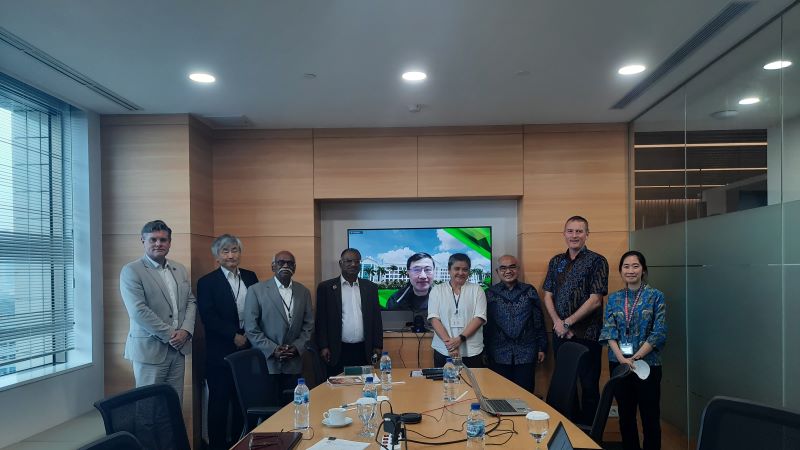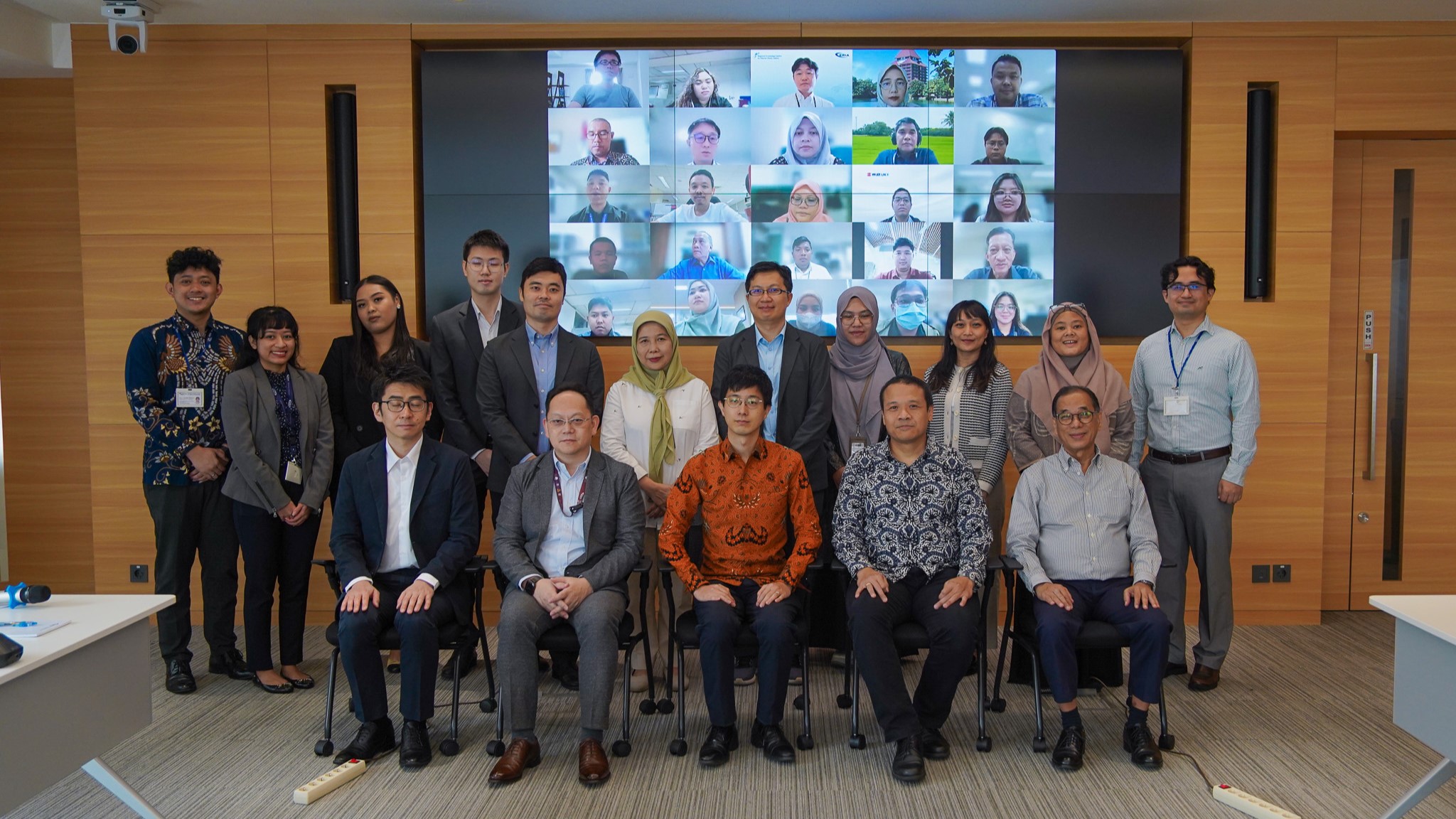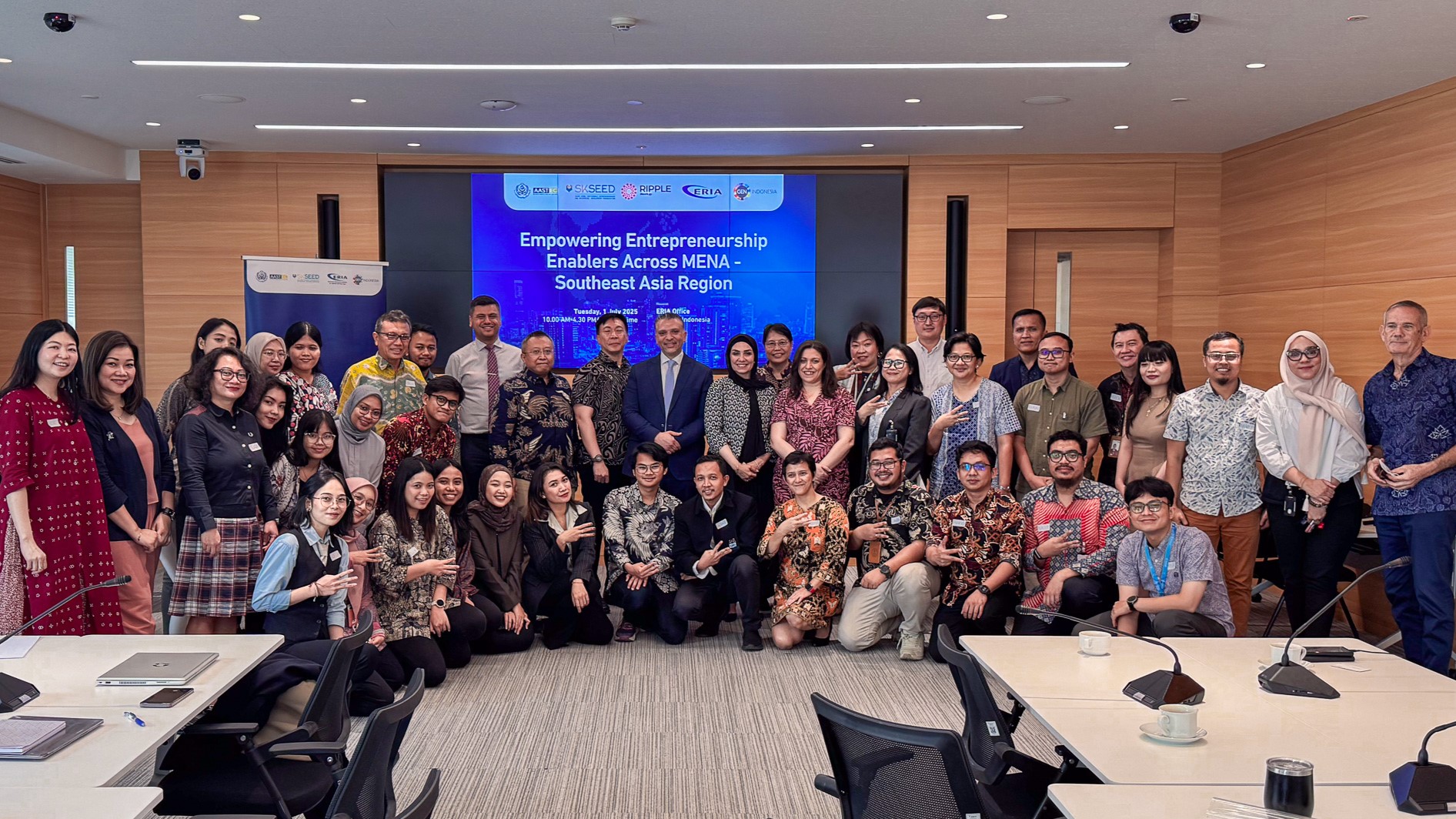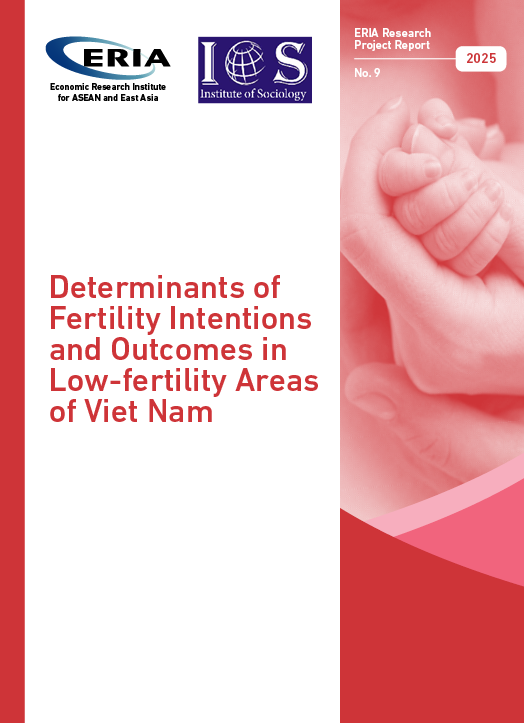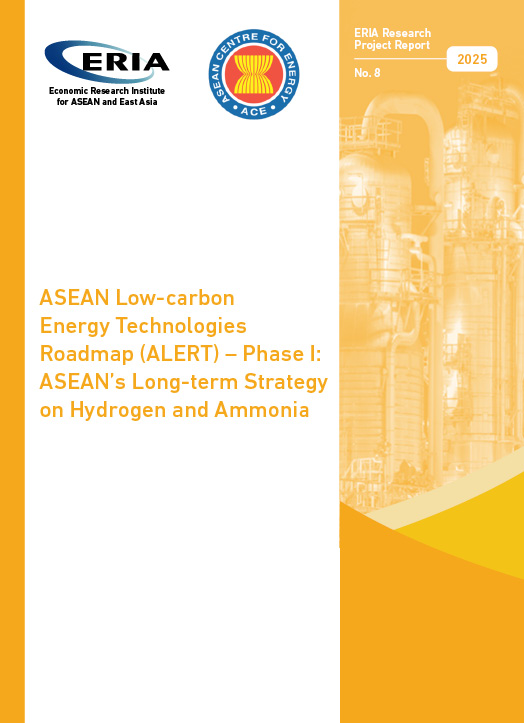ERIA Study on Carbon Markets, Taxation, Revenue Recycling, Regional Competitiveness
Date:
9 December 2022Category:
News, Press ReleasesTopics:
EnergyShare Article:
Print Article:
Jakarta, 9 December 2022: As various carbon pricing and market-based instruments globally revealed that the carbon tax and emission trading system (ETS) represent a cost-effective opportunity for achieving greenhouse gas (GHG) emission reductions, the Economic Research Institute for ASEAN and East Asia (ERIA) conducted a discussion forum on 9–10 December 2022 to learn more about carbon markets, taxation, revenue recycling, and regional competitiveness.
The study, led by Dr Venkatachalam Anbumozhi, ERIA’s Director of Research Strategy and Innovation, aims to examine implementation of carbon-pricing schemes in Association of Southeast Asian Nations (ASEAN) and East Asian Summit (EAS) countries, the potential of reducing distortionary effects of carbon energy tax by lump-sum transfer of revenues, and implications of industry sector competitiveness. The preliminary discussion received many valuable inputs from H.E. Stuart Calman, New Zealand’s Ambassador to ASEAN; Prof Govinda Timilsina, Senior Research Economist, World Bank; Prof Kaliappa Kalirajan, Australian National University; Mr Takashi Hongo, Senior Fellow, Mitsui Global Strategic Studies Institute; Dr Kuki Soejachmoen, Co-founder and Executive Director, Indonesian Institute for Decarbonisation; and Dr Xianbin Yao, former Special Senior Advisor to the President and Director General of the Pacific Department, Asian Development Bank.
Introducing the discussion, Dr Anbumozhi explained the regulatory fragmentation of carbon pricing in ASEAN and the problematic utilisation of subsidies to brown assets. He said the study would help mainstream and standardise the use of carbon pricing in ASEAN by identifying prioritised technical and policy areas through literature, the Energy-Economy-Environment (E3) regional econometrics model, and stakeholder mapping and surveys in all ASEAN Member States.
Prof Timilsina shared his knowledge on carbon taxation in developing countries, analysing energy and emission structures from China and Cote D’ Ivoire. He said his about Carbon Taxes showed that carbon taxation results in GDP losses. He added, however, that the economic loss from carbon taxation is considered smaller than the economic losses from other policies, and that the benefit of health from carbon taxation cannot be ignored. To minimise GDP losses, he suggested revenue-recycling schemes and carbon taxation to look into the country’s type of economy. Citing China’s relatively export-oriented economy, he said a carbon tax and revenue recycling scheme to cut corporate income tax favourable to export-oriented industries could minimise economic losses. Citing another finding for Cote D’ Ivoire, he said a carbon tax could provide incentives to the labour force to move from informal production to formal production activities when carbon tax revenue is recycled to cut the labour tax in the formal sector.
Ambassador Calman shared New Zealand’s ETS features and operation as an input to be considered for ASEAN. He said, compared with the carbon tax, ETS is preferred as it allows participants to plan and manage their obligations. He added that ETS covers all sectors and gases, although the agriculture sector, which is the biggest source of emissions, does not yet face the ETS price and consultation is underway on how it should be included in the ETS or an alternative mechanism. He said that features of ETS used are auctions and output-based free allocation to emission-intensive and trade-exposed industrial producers. He noted that auction revenues from ETS reach NZD1 billion per year and are being used for a Climate Emergency Response Fund to support low-carbon transition. He highlighted the importance of regulatory culture and compliance, including simplicity and efficiency of policy design.
Prof Kaliappa discussed Australia’s emission policy, where the country does not levy explicit carbon pricing or a tax but instead utilises and exports low-emission technology. He said Australia’s Climate Change Bill 2022 is committed to net-zero emissions by 2050. This, he added, is reflected in the commitment of each state and territory and cited Tasmania, which pursued 100% use of renewable energy by 2022. He observed that the use of coal is starting to wane and predicted its exit ahead of schedule. Prof Kaliappa reported Australia’s involvement in regional cooperation with ASEAN countries, such as Viet Nam, through Aus4Innovation to strengthen the latter’s innovation system. He pointed out that the negative impacts of carbon tax would be complemented by technological innovation, gradual increase in carbon tax, and financial support to poorer households. He added that ASEAN resource-rich countries can pursue all options like green and blue hydrogen.
Mr Hongo shared insights about Japan’s government-led voluntary ETS. He argued that a voluntary emission trading system would be an easier measure to adopt for countries that often face opposition to carbon taxation. He noted, however, that the voluntary system works because many companies are willing to announce their targets and disclose them and their progress to the public. It is important, he said, to prioritise energy saving. He remarked that post-evaluation mechanisms complement commitments made by the corporation, and social pressure can push corporate efforts to reduce emissions, especially by those with large emissions.
Shifting the focus of discussion from developed countries to developing ones, Dr Soejachmoen explained that the implementation of the carbon market in Indonesia is stalled due to the country’s regulatory conflicts in implementing carbon pricing and taxation. He said evidence-based and transparent policymaking and synergies between ministries are still needed to ensure the efficiency and effectiveness of programmes.
Adding China’s carbon pricing experience into the discussion, Dr Yao shared that carbon abatement is part of China’s quality-of-growth and further reform strategy. He said that as a complementary instrument, ETS schemes have been introduced gradually over time and that central and local government agencies are actively involved in facilitating climate ambition. He reported that ETS in China covers the power sector and uses an intensity-based approach instead of cap and trade. He noted that a pragmatic and prudent policy design is important as every following action will be started with policy. He added that mitigation mechanisms for the ‘losing party’ due to policy need to be looked at as well.
The discussion concluded with a reflection on ASEAN’s nationally determined contribution targets and the reality in the field. The participants agreed that learning from other non-ASEAN countries, policy coherence, a good synergy between domestic institutions, collaboration with private institutions to finance the just transition and technological innovations, subsidies or incentives targeted to support green transformation, and monitoring mechanisms would help accelerate the transition. They acknowledged that ASEAN must be able to find the right purpose for imposing a carbon market.
The study’s initial findings and policy recommendations are expected by 2024.
